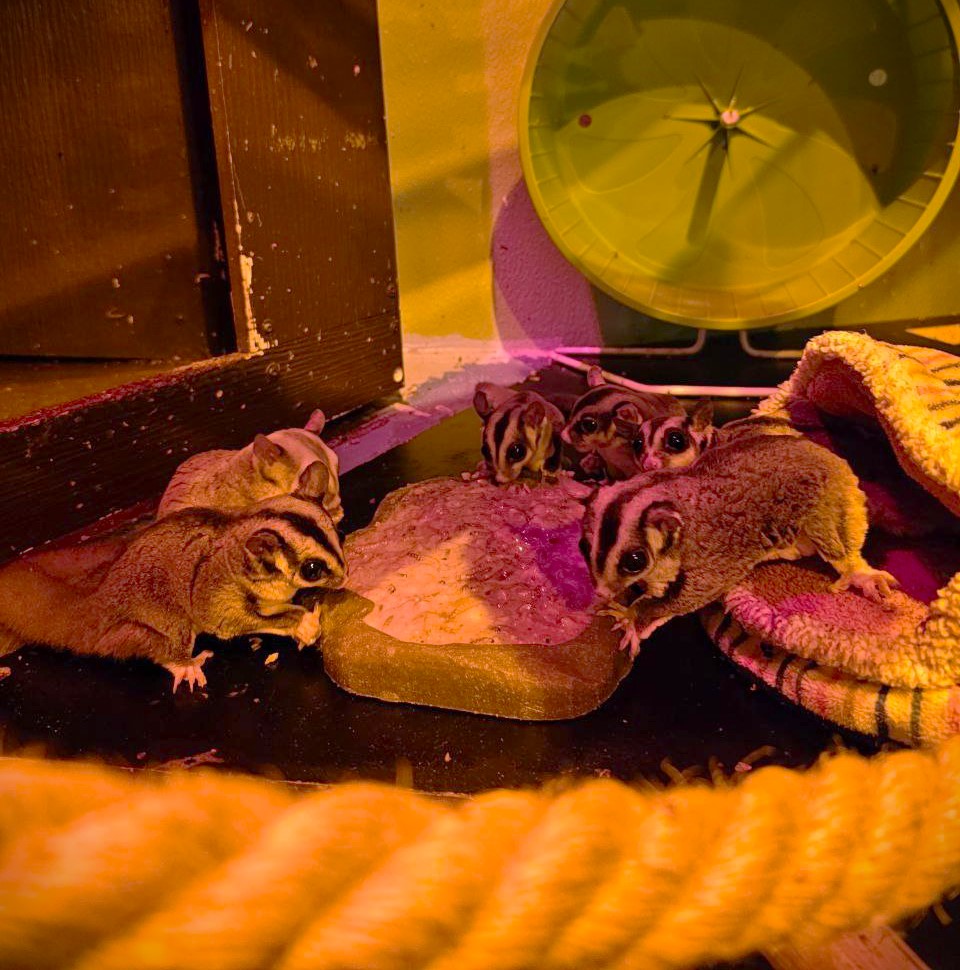SeaQuest Guide to Rays!
Share it on:
What’s the Difference Between Stingrays and Manta Rays?
Probably one of the most recognizable animals in the world’s oceans, Rays are known as graceful gliders in the water and have earned the nickname “Sea Pancakes.”
The two most commonly known rays are Stingrays and Manta Rays. Though both have some distinct differences, they have some general similarities among the different species of each:
- Both Manta and Stingrays have flat disc-like bodies and long whip-like tails.
- Their eyes are normally located on the top of their heads.
- Both have mouths and gills on their bellies.
Stingrays are a group of sea rays, which are cartilaginous fish related to sharks. There are about 220 known stingray species and they are classified in the suborder Myliobatoidei of the order Myliobatiformes. Stingrays consist of eight families:
- Hexatrygonidae (Sixgill stingray),
- Plesiobatidae (Deepwater stingray)
- Urolophidae (Stingarees)
- Urotrygonidae (Round rays)
- Dasyatidae (Whiptail stingrays)
- Potamotrygonidae (River stingrays)
- Gymnuridae (Butterfly rays)
- Myliobatidae (Eagle rays)
Sometimes mis-indentified as stingrays, Manta rays are in the class Myliobatiformes which includes stingrays and relatives, they are in the family Myliobatidae (Eagle rays). Manta rays have the largest brains and brain-to-body ratio of all fish. Unlike their distant relative stingray, Mantas only have two groups of species:
- Giant Manta Rays
- Reef Rays
How Many Different Kinds of Rays Are There?
Different Kinds of Rays:
- Devil Ray
- Spotted Eagle Ray
- Electric Ray
- Southern Stingray
- Shark Ray
- Butterfly Ray
- Bat Ray
What is a Stingray?
Stingrays find the sandy bottom of the seas their home. Stingrays can be found in both saltwater and freshwater environments and they tend to migrate in coastal tropical and subtropical marine waters throughout the world. Oftentimes you will see them on ocean floors where they blend in nicely with the sand. These areas are preferred for them to keep out of danger from predators and hunt for food.
Stingrays are clearly known for their stingers, but they also have a special electrical sensor located around their mouths called ampullae of Lorenzini. Using this ampullae allows the stingray to detect the electrical charges emitted by their prey.
How Big Do Stingrays Get?
Stingrays range anywhere from smaller sizes around 10 inches long to 7 or 8 feet in length. One of the largest stingrays ever discovered was found to be about 13 feet long and weighed over 600 pounds!
What Do Stingrays Eat?
Stingrays like to eat lots of yummy creatures such as worms, clams, oysters, snails, shrimp, small fish, and squid. These diet choices are often found closer to reefs which is why stingrays generally hunt in these areas.
How Long Do Stingrays Live?
The average lifespan for stingrays is about 25 years.
What is a Manta Ray?
Giant Mantas inhabit warm tropical waters worldwide. They tend to spend most of their time swimming near the surface of the water or are known to be gliding along as far down as 400 feet. Oceanic manta rays are distinguished by the markings on their backs, which include large black and white patches above their shoulders. Giant manta rays have the biggest brains of any fish ever studied, and their brain power to is used to learn, exercise memory, distinguish between objects, and even recognize themselves in the mirror.
How Big Do Manta Rays Get?
Much larger than their stingray counterpart, Ocean Mantas can grow to at least 23 feet in length from wing tip to wing tip and can weigh up to 4,000 pounds! Reef Manta rays are the world’s second-largest species of ray and have an average wingspan of approximately 14 feet.
What Do Manta Rays Eat?
Manta rays love feeding on microscopic organisms and plankton. Their diet most commonly consists of small invertebrates and fishes, as well as tiny larvae of various species.
How Long Do Manta Rays Live?
Giant Manta Rays have an average lifespan of around 15-20 years though some reef rays have been found to live up to 40 years.
Did You Know? Famous Australian Zookeeper Steve Irwin died in 2006 from an injury caused by a barb from a stingray. Irwin was well known as a staunch animal lover and had been snorkeling in the Great Barrier Reef near Australia when he came across a stingray and accidentally startled the animal.
Are Stingrays Dangerous?
Manta rays and stingrays are highly misunderstood sea creatures. Unfortunately, they’ve been depicted as dangerous and deadly because of their size and their “sting” names. While they are predatory animals, they are not as dangerous as they seem to humans. More often than not, manta rays and stingrays will retreat from humans rather than interact with them. Giant manta rays are actually gentle creatures. They are harmless animals and have been observed to be very playful and smart. Interactions between humans and manta rays can be described as pleasant and safe.
As mentioned, Stingrays do have venomous stingers on their tails which can make them dangerous. Stingrays are not a species known to attack first. Their stings have resulted in serious injury or death among humans, however, these incidents are extremely rare and they will only sting humans out of defense. Typically they are very docile and their usual reaction is to flee from human contact.
To avoid stingray injuries, it is recommended to do a “stingray shuffle” when walking the shallow areas of the beach shore. This consists of shuffling your feet on the sand, instead of taking big steps. These movements serve as a warning for stingrays and will cause them to reveal themselves and swim away. Snorkelers and divers have a general practice of lightly wafting the sandy area with their fins first before trying to kneel or stand in the water.
Are Stingrays Endangered?
Manta rays and stingrays both share the common threat of being hunted by larger sharks, killer whales, and orcas. Stingrays are preyed upon by sea lions and seals as well, The biggest common threat to these two creatures is humans. Humans have always hunted manta rays and stingrays for food, medicinal purposes, and for economic means. This has caused levels of overfishing which have now placed the Oceanic Manta Ray on the red list as the first manta ray to be listed as an endangered species. Reef Mantas is classified as a vulnerable species due to entanglement, plastic pollution, and illegal fishing operations.
SeaQuest is committed to protecting our world’s oceans and endangered animals. We focus on how to be proactive in finding solutions. To learn more about Rays and how you can help SeaQuest protect stingrays and manta rays around the world, book your visit today at any of the following locations: Utah, Las Vegas, Dallas-Fort Worth, Denver, Sacramento, Minneapolis, Connecticut, Lynchburg, New Jersey, and Atlanta.

~Vince Covino











